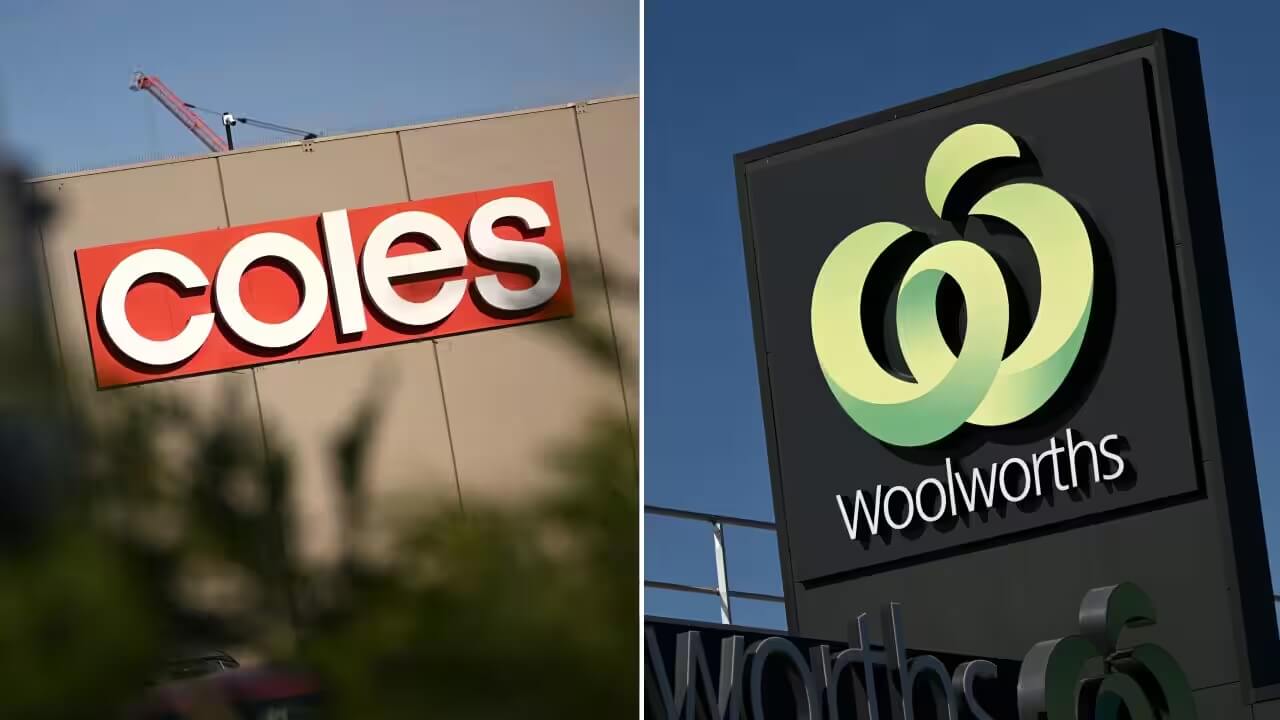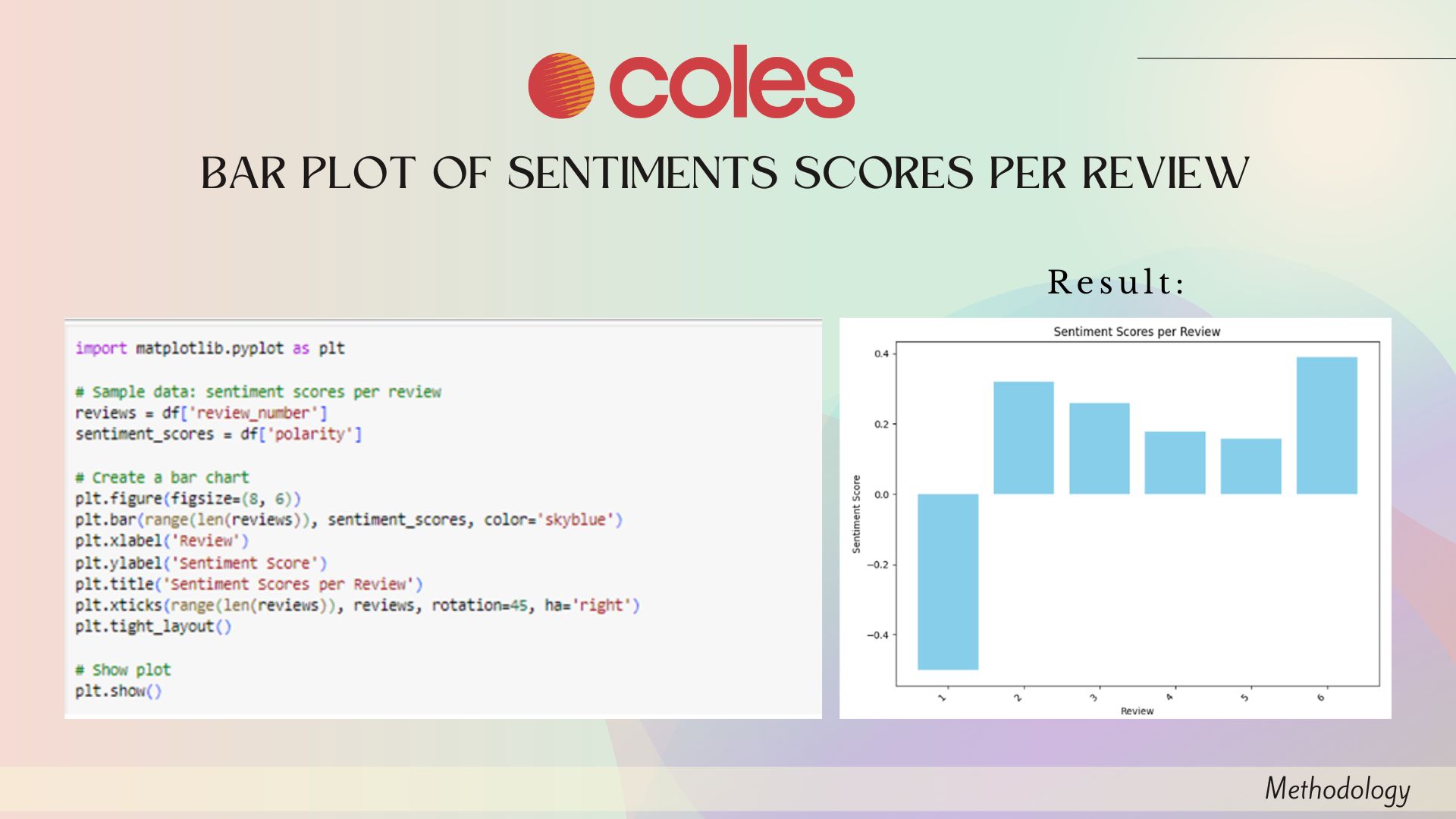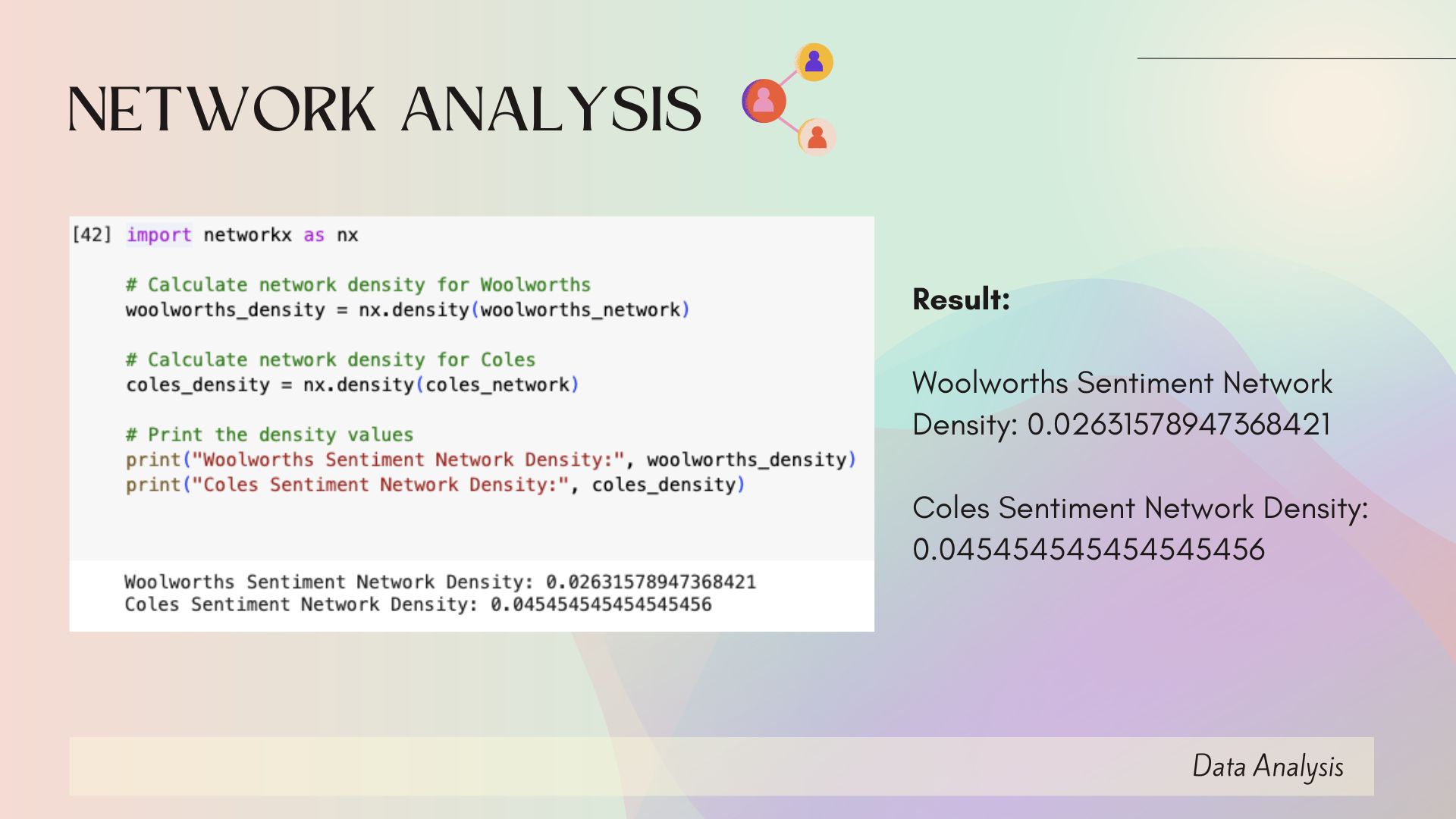Woolworths and Coles Sentiment Analysis

Description
Analyzed customer reviews from Yelp for Woolworths and Coles and to classify customer feedback into positive, negative, and neutral categories. Leveraged natural language processing (NLP) techniques to identify trends in customer perceptions, uncover pain points, and highlight opportunities for product and service improvements.
Key Skills Used
Data Collection & Preparation (Yelp data scraping, cleaning, preprocessing)
Sentiment Analysis (Python, NLP libraries, polarity scoring, WordCloud visualization)
Network Analysis (graph metrics, sentiment network density)
Data Visualization (bar plots, word clouds, network diagrams)
Business Analysis (customer engagement measurement, brand reputation evaluation)

The association between the sentiment score and customer reviews for Woolworths supermarket is displayed in a bar graph. It demonstrates that most customers have positive things to say about Woolworths supermarket. Just two out of ten clients provided negative comments, compared to eight who expressed good opinions.
The bar graph above shows the relationship between Coles supermarket customer reviews and sentiment score. It proves that the majority of consumers are satisfied with Coles supermarket. Out of six customers, only one had a negative review; five had positive things to say.

Insights
Overall Satisfaction:
- Woolworths: 8/10 reviews positive; 2/10 negative.
- Coles: 5/6 reviews positive; 1/6 negative.
- Both brands show strong positive sentiment, indicating high customer satisfaction.
Variation in Sentiment:
- Woolworths has a slightly higher proportion of negative reviews than Coles.
- Coles reviews are more sentiment-consistent based on network density (0.045 vs Woolworths’ 0.026).
Key Positive Themes:
- Woolworths: convenience, competitive prices, wide product choices.
- Coles: wide selection, reasonable prices considering cost of living.
Network Analysis Findings:
- Coles’ higher sentiment network density suggests customers share more similar experiences and preferences.
- Woolworths’ lower density suggests more diverse opinions.
Strengths & Weaknesses:
- Woolworths: Higher average sentiment score (more positive tone overall).
- Coles: Lower average sentiment score, suggesting room for improvement in customer satisfaction.

- Coles reviews show stronger sentiment consistency than Woolworths, meaning customers tend to express similar feelings and experiences.
- Woolworths reviews reflect more diverse sentiment, suggesting less consistency in customer feedback compared to Coles.
The result shown that Woolworths has a higher average sentiment score than Coles, which means that on average customers express more positive sentiments to Woolworths. While Coles has a lower score which indicates the opposite, which may indicate that Coles is facing challenges in providing customer satisfaction.

Recommendations
For Woolworths:
- Reduce recurring complaints by improving customer service and addressing common pain points.
- Use the variety in customer feedback to design targeted offers for different shopper groups.
- Highlight convenience and product variety in marketing campaigns to strengthen brand image.
For Coles:
- Improve service quality to raise average customer satisfaction scores.
- Build stronger emotional connections with customers through personalised promotions and loyalty programs.
- Maintain pricing strategy that resonates with cost-conscious shoppers.
For Both Supermarkets:
- Keep competitive pricing and wide product range as core strengths.
- Introduce real-time sentiment tracking to quickly spot and resolve issues.
- Use feedback trends to guide marketing, seasonal promotions, and customer retention strategies.
- Monitor competitor sentiment regularly to stay ahead in the market.
